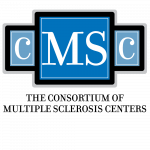Background:
Alemtuzumab (ALE) and ocrelizumab (OCR) are widely recognized as among the highest efficacy multiple sclerosis (MS) disease modifying therapies (DMTs). While prior reports have demonstrated the advantage of alemtuzumab over ocrelizumab in terms of number-needed-to-treat (NNT) to reduced relapse and disability outcomes. The relative number-needed-to-harm (NNH) has not been previously reported.
Objectives:
To perform a NNH analysis of ALE and OCR in the pivotal beta interferon-controlled clinical trials in relapsing forms of MS.
Methods:
NNH for one additional patient to have an adverse event is the inverse of absolute risk difference in adverse events (AEs) rates between experimental and control groups. Data on AEs events was obtained from the reported pivotal clinical trials of ALE (CARE-MS I/II, NCT00530348/NCT00548405) and OCR (OPERA I/II, NCT01247324/NCT01412333). Subjects with ?1 AEs, AEs leading to treatment discontinuation, and serious AEs (excluding relapses) were considered in this analysis. Since one cannot treat or harm a fraction of a patient, NNHs are rounded-up to a whole number.
Results:
The NNH for one patient to have any AE on ALE (instead of interferon beta) was 25 and 34 (33.3) from CARE-MS I and II, respectively. The NNH for one patient to have any AE on OCR (instead of interferon beta) was 143 (142.86) from OPERA II, while in OPERA I, since there was a higher percentage of AEs in the interferon beta arm, the NNH for one patient to have any AEs on beta interferon (instead of OCR) was 125. For both ALE and OCR, subjects were more likely to have an AE leading to study drug discontinuation on interferon beta: 20 and 25 patients (CARE-MS I and II, respectively) patients would need to receive treatment with ALE instead of beta interferon for one patient to not have an AE leading to study drug discontinuation; 32 (31.25) and 46 (45.45) (OPERA I and II, respectively) patients would need to receive treatment with OCR instead of beta interferon for one patient to not have an AE leading to discontinuation. The NNH for one patient to have an SAE (excluding MS relapses) on ALE (instead of beta interferon) was 15 (14.29) from CARE-MS I, while in CARE-MS II there was no difference in the rate of serious adverse events between the two arms. In both OPERA I and II, subjects were more likely to have an SAE on interferon beta than on OCR: 112 (111.11) and 39 (38.46) (from OPERA I and II, respectively) would need to be treated with OCR instead of interferon beta for one patient to not have a serious adverse event).
Conclusions:
Overall the safety profile of OCR is better than that of ALE, although alemtuzumab holds an advantage over ocrelizumab in terms of AEs leading to study drug discontinuation. NNH itself is limited by clinical trial differences, and there is an increasing need to develop novel techniques to compare the safety and tolerability of MS DMTs across clinical trials.
[learn_press_profile]
